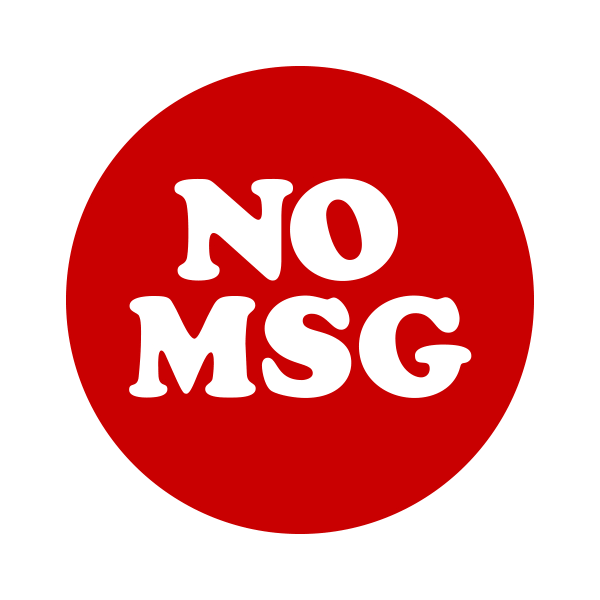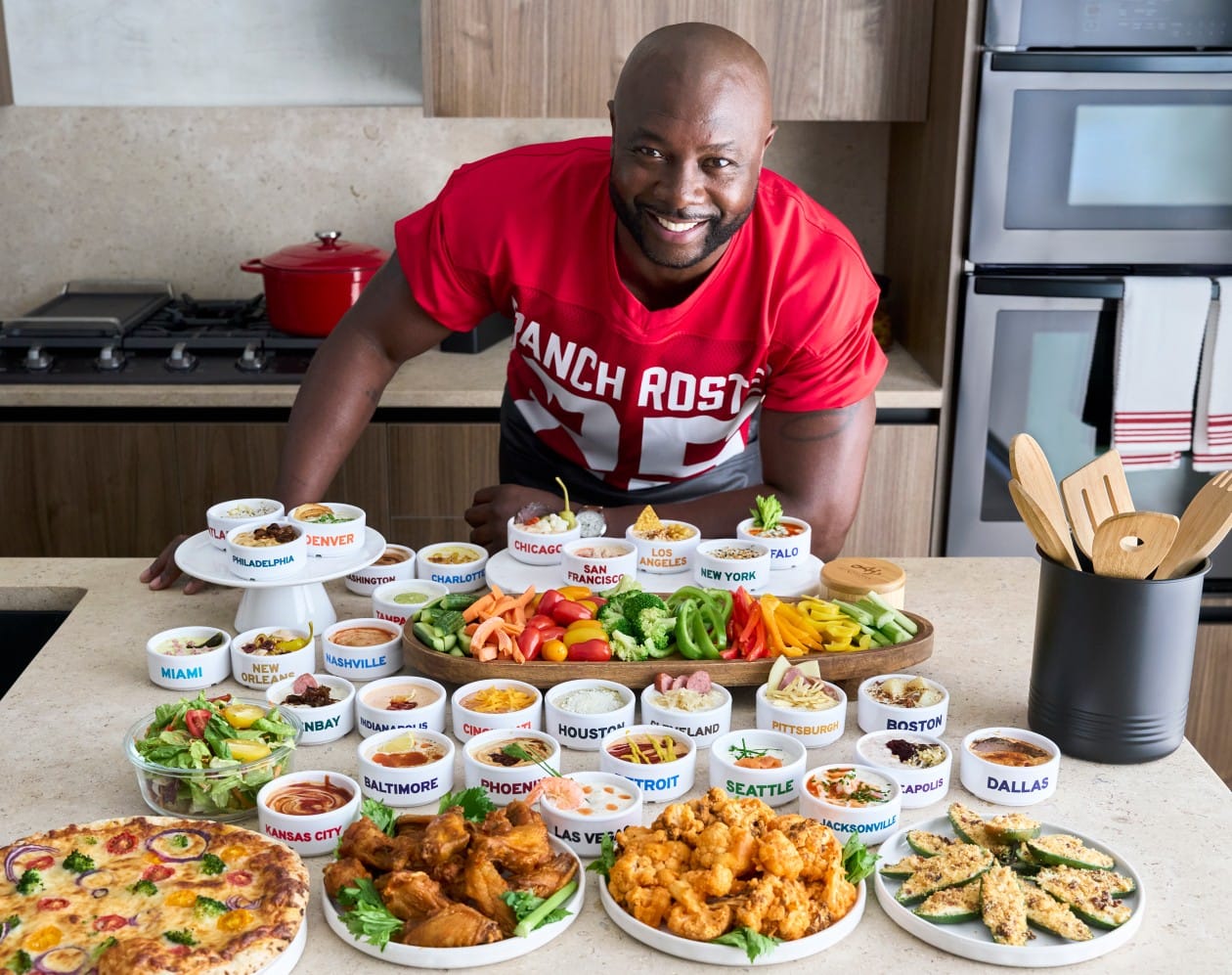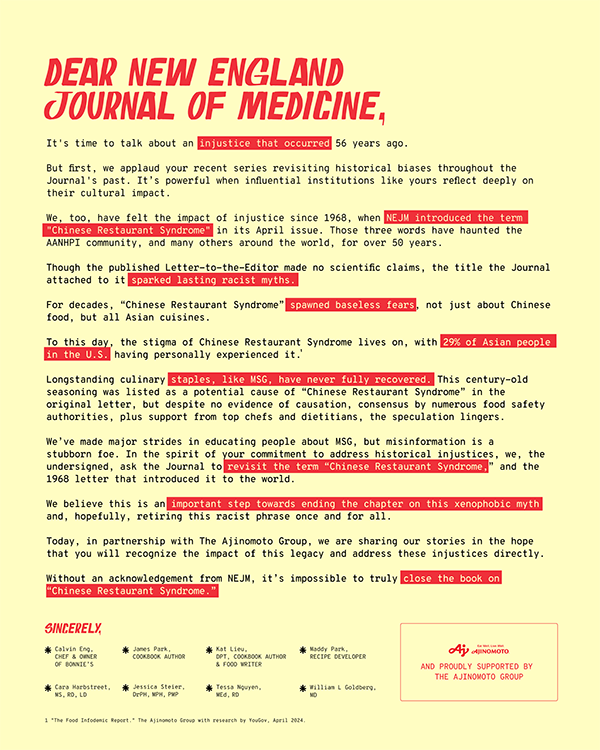
30 ranch dips inspired by football cities.
One MVP ingredient: MSG.
We teamed up with football player-turned-chef Eddie Jackson to create an elite lineup of ranch recipes celebrating hometown flavors. MSG has been a go-to seasoning in your favorite foods for decades, and now it’s taking game-day snacks to the next level. See our full roster of flavors and vote for the ultimate ranch.
Explore the RosterThe Rise of MSG Myths
Yep, MSG misinformation is trending. The Ajinomoto Group wants to help you spot these wild claims and stop their spread with concrete science.
Debunk the myths
It's time to

56 years ago, The New England Journal of Medicine coined the term “Chinese Restaurant Syndrome.” Though the original letter lacked scientific grounding, the term sparked decades of widespread MSG misinformation and anti-Asian xenophobia. Despite repeatedly verifying MSG’s safety, the stigma persists to this day.
We applaud The New England Journal of Medicine for revisiting historical biases it has perpetuated and promoting accuracy in science. As nutrition, public health, and culinary experts, we share this mission. This is why we believe it’s time to #RevisitCRS: to create a more inclusive food culture by promoting facts over fear, and ending the myth on “Chinese Restaurant Syndrome.”
Know the factsThe Food Infodemic Report
Cheese-fueled nightmares! Chemophobia! Chinese Restaurant Syndrome! In recent years, food misinformation is responsible for some wild (and in some cases dangerous) misperceptions in the U.S. So, in 2024 The Ajinomoto Group decided to examine the issue and understand the impact that this “infodemic” is having across communities.
Explore the report
No, we shouldn’t
#CancelPizza

Pizza is totally fine. So is MSG.
Yep, monosodium glutamate is inherently found in pizza toppings like tomatoes and Parmesan. But keep this in mind: sodium and glutamate is present in TONS of different foods, and our body metabolizes them the same — whether it’s from a shiitake mushroom or a shaker of MSG.
Plant–
Derived
MSG is plant‐derived
(made from plants like corn & sugar cane)
Made via
Fermentation
MSG is created through fermentation
Verified
Safe
MSG is verified as safe by the Food and Drug Administration (FDA) and the Joint FAO/WHO Expert Committee on Food Additives (JECFA)
The Story of
“No MSG”
In the 1960s, a wave of anti‐Asian xenophobia created a nationwide panic about MSG. This fear had an immediate impact on a vulnerable group of Americans: Chinese restaurant owners.
To survive the backlash, they were forced to prominently display “No MSG” signs on menus and storefronts. Soon, other restaurants and food products adopted that same misleading symbol. Now decades later, there remains a lot of unlearning before America can fully appreciate a beloved seasoning that’s enjoyed around the world.
Interested in helping us spread the truth about MSG? We’re always looking for new businesses and people to partner with.
Email us at partners_knowmsg@ajiusa.com




